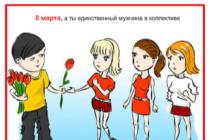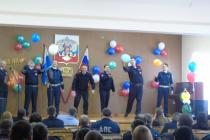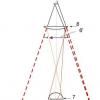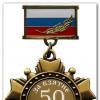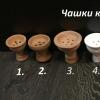OKVED (All-Russian classifier of species economic activity) is applied when state registration individual entrepreneurs (IP) and legal entities.
In 2015, the OKVED reference book OK 029-2001 (NACE rev. 1) with deciphering the codes is used. It was adopted by the Decree of the State Standard of Russia dated November 06, 2001 No. 454-st. On January 1, 2016, OKVED 2 (version OK 029-2014 (NACE rev. 2)), approved by the order of Rosstandart of January 31, 2014 No. 14-st.
OKVED structure
The reference book consists of 17 sections marked with Latin letters (A-Q) and 16 subsections (CA, CB, DA-DN). They are broken down into smaller classes, subclasses, groups, subgroups, and species, presented as two to six Arabic numerals separated by dots.
The code for grouping types of economic activity has the following structure:
- XX - class;
- XX.X - subclass;
- XX.XX - group;
- XX.XX.X - subgroup;
- XX.XX.XX - view.
Selection of OKVED codes
During registration new organization there is a question of selection of types of economic activity. It is important to know that all of them are selected strictly according to OKVED codes.
To find the right code, you first need to decide on the scope of the organization (for example, textile production), then find the required section or subsection (for example, DB). Further delve into the class, subclass, group, subgroup and type until a specific type of economic activity is determined.
- The selection of the code does not depend on the form of ownership of the organization: they are identical for IP, LLC, CJSC.
- The selected code must consist of at least 4 digits, i.e. be the name of a group (XX.XX), subgroup (XX.XX.X) or species (XX.XX.XX).
- In constituent documents, you can specify an unlimited number of codes (preferably no more than 20 pieces).
- When registering, one main code (of the core activity of the organization) and additional (non-core occupations or activities in the near future) are indicated.
- When choosing types of economic activity, it should be remembered that some of them require licensing.
- At any time, you can make changes to the list of codes (add or remove).
Instruction
To facilitate the selection of the type of economic activity, a search is organized by name or by code. It is also possible to add positions of interest to those saved for further viewing or printing codes with decryption.
This section includes:
- the use of plant and animal natural resources, including the cultivation of cereals, the maintenance and breeding of animals;
- obtaining wood and other plants, animals or animal products on a farm or in a natural habitat
This section includes:
- extraction of minerals occurring in nature in the form of solid rocks (coal and ore), in a liquid state (oil) or in a gaseous state (natural gas)
Mining can be carried out by various methods such as underground or open pit mining, well drilling, seabed mining, etc.
This section also includes:
— additional types activities to prepare raw materials for sale: crushing, grinding, cleaning, drying, sorting, ore beneficiation, coal beneficiation, natural gas liquefaction and solid fuel agglomeration
The listed types of work are usually carried out by economic entities that are themselves involved in the extraction of minerals and/or are located in the mining area. Extraction of minerals is classified in groupings according to the type of the main extracted mineral raw material.
Groupings 05 and 06 include:
— extraction of fuel and energy minerals ( hard coal, brown coal (lignite), oil, gas);
Groupings 07 and 08 include:
– mining of metal ores, various minerals and non-metallic minerals
Some technological processes related to this section, in particular processes related to the production of hydrocarbons, may also be carried out by specialized enterprises commissioned by third parties as production services described in grouping 09
This section does not include:
— processing of extracted/extracted minerals, see section C (Manufacturing industries);
— use of recovered materials without further processing for construction purposes, see section F (Construction);
- bottling of spring and mineral water from springs and wells, see 11.07;
- crushing, grinding and other processing of certain soils, rocks and minerals not associated with mining operations, see 23.9
This section includes:
— physical and/or chemical processing of materials, substances or components with the aim of converting them into new products, although this cannot be used as a single universal criterion for determining production (see waste processing below)
Materials, substances or transformed components are raw materials, i.e. products Agriculture, forestry, fisheries, rocks and minerals and products of other manufacturing industries. Significant periodic changes, updates or transformations of products are considered to be related to production.
The manufactured product may be ready for consumption or may be a semi-finished product for further processing. For example, an aluminum refining product is used as a raw material for the primary production of aluminum products, such as aluminum wire, which in turn will be used in the necessary structures; production of machinery and equipment for which these spare parts and accessories are intended. The manufacture of non-specialized components and parts of machinery and equipment, such as engines, pistons, electric motors, valves, gears, bearings, is classified in the appropriate grouping of section C Manufacturing, regardless of what machinery and equipment these items may be part of. However, the manufacture of specialized components and accessories by molding/molding or stamping of plastic materials is classified under 22.2. The assembly of component parts and parts is also referred to as production. This division includes the assembly of integral structures from constituent components, either self-produced or purchased. Recycling, i.e. processing of waste for the production of secondary raw materials was included in group 38.3 (processing of secondary raw materials). While physical and chemical processing may take place, this is not considered part of manufacturing. The primary purpose of these activities is the main processing or processing of waste, which is classified in section E (water supply; sewerage, waste management, pollution control activities). However, the production of new finished products(as opposed to products made from recycled materials) refers to all production as a whole, even if waste is used in these processes. For example, the production of silver from film waste is considered a manufacturing process. Special maintenance and repair of industrial, commercial and similar machinery and equipment is generally classified in group 33 (repair and installation of machinery and equipment). However, the repair of computers, household appliances is classified in group 95 (repair of computers, personal and household items), while at the same time, repair of cars is described in group 45 (wholesale and retail and repair auto Vehicle and motorcycles). Installation of machinery and equipment as a highly specialized activity is classified in group 33.20
Note - The boundaries of manufacturing with other sections of this classifier may not have a clear unambiguous specification. As a rule, manufacturing industries involve the processing of materials to produce new products. Usually this is a completely new product. However, the definition of what constitutes a new product can be somewhat subjective.
Processing implies the following types of activities involved in production and defined in this classifier:
- processing of fresh fish (extraction of oysters from shells, filleting of fish) not carried out on board a fishing vessel, see 10.20;
- milk pasteurization and bottling, see 10.51
- dressing of leather, see 15.11
- sawing and planing of wood; wood impregnation, see 16.10;
- printing and related activities, see 18.1
- tire retreading, see 22.11;
- manufacture of ready-to-use concrete mixes, see 23.63
- electroplating, plating and heat treatment of metal, see 25.61
- mechanical equipment for repair or overhaul (e.g. motor vehicle engines), see 29.10
There are also activities included in the processing process, which are reflected in other sections of the classifier, i.e. they are not classified as manufacturing.
These include:
— logging classified in section A (AGRICULTURAL, FORESTRY, HUNTING, FISHING AND FISH CULTURE);
— modification of agricultural products classified in section A;
— preparation food products for immediate consumption on premises, classified in group 56 (activities of undertakings Catering and bars)
— beneficiation of ores and other minerals classified in Section B (MINING);
— construction and assembly work carried out on construction sites classified in section F (CONSTRUCTION);
— the activity of breaking down large quantities of goods into small groups and re-marketing of smaller quantities, including packaging, repackaging or bottling of products such as alcoholic beverages or chemicals;
- sorting solid waste;
— mixing of paints according to the customer's order;
— cutting of metals by order of the client;
- explanations of the various goods classified under section G (Wholesale and retail trade; REPAIR OF MOTOR VEHICLES AND MOTORCYCLES)
This section includes:
— provision of electrical and thermal energy, natural gas, steam, hot water, etc. through the existing infrastructure (network) of distribution lines of wires and pipelines
The parameters and length of the electrical and heat network are not a decisive factor; this section also includes distribution electrical energy, gas, heat, hot water, etc. in industrial areas or residential buildings. Therefore, this section includes: types of activities of enterprises that generate electrical and thermal energy or gas, control the distribution of electricity or gas
It also includes:
– provision of heat and conditioned air supply
This section does not include:
- operation of water supply and sewerage systems, see 36, 37, transportation of gas through a gas pipeline (usually over long distances)
This section includes:
- waste management (including collection, treatment and disposal), such as solid or non-solid, industrial or domestic, as well as contaminated areas of the earth's surface
A product obtained from the processing of waste or Wastewater, can be recycled or used as raw material in other production processes. Water supply activities are also added to this section, since water supply is carried out with or through components also included in the wastewater treatment process.
This section includes:
– general construction and special construction activities in terms of buildings and structures
It includes the construction of new facilities, reconstruction, overhaul, maintenance and additional work, installation of finished buildings or structures on the construction site, including the construction of temporary structures
General construction includes:
- construction of housing, office buildings, warehouses and other public buildings, farm buildings, etc. or construction of structures, such as roads and streets, artificial structures on them, road service facilities, railways, runways of airfields and spaceports, others water bodies, irrigation systems, water supply systems and sewerage networks, industrial enterprises, pipelines, communication and power lines, sports facilities, etc.
Construction works can be performed at own expense, for remuneration or on a contractual basis. Some or all of the work may be subcontracted. This section includes work performed construction companies who are fully responsible for the construction project. This division includes the complete construction of buildings (group 41), the execution of the full scope construction works(group 42), as well as special construction activities, if they are carried out only as part of the construction process under subcontracting (group 43). It includes the rental of construction equipment with an operator
This section also includes:
— implementation of projects for the construction of buildings or civil facilities using financial, technical and physical resources for their implementation with a view to the subsequent sale of the constructed buildings or facilities
If this activity is carried out for the operation of constructed facilities, then all types of work are related to the construction
This section includes:
- wholesale and retail trade (i.e. sale without transformation) of any kind of goods, as well as different kinds services accompanying the sale of goods. Wholesale and retail trade are the final stages of the distribution of goods. This group also includes the repair of motor vehicles and motorcycles. Selling without transformation is understood to mean standard activities (operations) associated with trade, such as sorting, classifying, arranging goods, mixing (mixing) goods (for example, sand), bottling (with or without prior washing of bottles), packaging, splitting bulk lots, repackaging into smaller lots for distribution, storage (refrigerated or frozen products)
Group 45 includes:
- all activities related to the sale and repair of cars and motorcycles, while groupings 46 and 47 include all other activities related to sales
The main difference between grouping 46 (wholesale) and grouping 47 (retail) is based on the predominant type of customer
Wholesale is the resale (without conversion) of new or used goods retailers, selling to legal entities such as manufacturing, commercial, institutional or professional users, or reselling to other wholesalers, or using agents or brokers to buy or sell goods
The main types of companies included in grouping 46 are commodity wholesalers, i.e. wholesalers who acquire rights to goods sold, such as commodity wholesalers or brokers, distributors working for manufacturers, exporters, importers and buyer associations, sales offices (but not Retail Stores) that are supported by manufacturers or extractors that are not part of them for marketing purposes and not only; accept orders for direct shipments from factories or mines. It also includes brokers, agents, commission agents, buyers and buyer associations associated with the agricultural market. Wholesalers often assemble, sort and condition goods in large lots themselves, break up large ones, repackage them into smaller lots (for example, medicines). Store, refrigerate, deliver and install products, promote sales and create brand names
This section includes:
- transportation of goods and passengers, subject to or not subject to a schedule according to railway, pipelines, roads, water or air transport, as well as activities associated with it, such as the operation of stations and terminals, parking lots for vehicles, handling and storage of cargo, etc.
This section also includes:
– rental of vehicles with a driver or operator
This section does not include:
- overhaul or maintenance of vehicles other than motor vehicles, see 33.1
- construction, maintenance and repair of roads, railways, ports, airfields, see 42;
— Maintenance and repair of motor vehicles, see 45.20
- rental of vehicles without a driver or operator, see 77.1, 77.3
This section also includes:
- postal services
This section includes:
- provision of accommodation for short stays, as well as the provision of a full range of food and beverages suitable for direct consumption
Volume and type additional services provided under this section may vary significantly
This section does not include:
- provision of long-term residence services, as this is classified in the section describing real estate transactions (section L);
— the preparation of food or drinks that are either not fit for immediate consumption or are sold through independent distribution channels, i.e. through wholesale or retail
The classification of the preparation of these foodstuffs is given in Section C (MANUFACTURING)
This section includes:
- production and transmission of information and cultural materials, provision of means for the transmission and placement of these materials, as well as activities in the field of communications, information technology and data processing technologies and other activities for the provision of information services
The main elements of this section are publishing activities, including the issuance of software(group 58), filming and sound recording (group 59), television and radio broadcasting activities (group 60), telecommunications activities (group 61), information Technology(group 62) and other information services (group 63). Publishing activities include the acquisition of copyright in the content of material (information products) and the dissemination of this content to the general public by organizing or participating in the reproduction and distribution of this content in various forms. All possible forms of publication (including printed, electronic and sound form, information and communication network Internet, creation multimedia products such as manuals on CD-ROM, etc.) are included in this section.
Activities related to the production and distribution of television and radio programs are included in groups 59, 60 and 61, which are devoted to various stages this process. Separate elements such as the production of motion pictures, television series, etc., are classified under group 59, while the production of finished programs for television and radio from components produced under group 59 or other components (for example, live news programs) is included in group 59. grouping 60. Broadcasting of ready-made television and radio programs without any change in content is included in grouping 61. Such broadcasting, in accordance with the description of grouping 61, can be carried out through terrestrial, satellite, cable television and radio broadcasting, wired radio broadcasting or using the information and communication network Internet
This section includes:
- financial services, including insurance, reinsurance, pension insurance, and financial services activities
This section also includes:
— activities related to financial assets, activities holding companies, trusts, various kinds of funds and similar financial organizations
This section includes:
- the activities of landlords, agents or brokers in one or more of the following areas: buying or selling real estate, renting real estate, providing other real estate services such as valuation, insurance or fiduciary activities
Providing activities intermediary services in this section can also be carried out with own or rented real estate and can be carried out on a fee or contract basis
This section also includes:
- information about property owners
This section includes:
— activities of organs state power And local government
It includes:
- adoption of laws and the corresponding regulation of such areas as taxation, national defense, public order and security, migration, international activities, finance, natural resources and environmental protection, education, science, culture, health, Physical Culture and sports, tourism. The legal or institutional status is not decisive when classifying the type of activity in this section.
This means that activities classified in other sections of the classifier are not included in this section, even if they are carried out by state authorities and local governments. For example, state regulation of activities in the field of education is included in this section, while the learning process itself is not included in this section (see section P). State regulation health care activities are included in this section, while hospital activities are not included in this section (see section Q)
This section also includes:
— activities in the field of social security
This section includes:
– education for both schoolchildren and for training for various professions
IN Russian Federation the following types are installed educational organizations implementing the main educational programs:
1) a preschool educational organization - an educational organization that, as the main goal of its activities, carries out educational activities for educational programs preschool education, supervision and care of children;
2) general educational organization - an educational organization that, as the main goal of its activities, carries out educational activities in educational programs of primary general, basic general and (or) secondary general education;
3) professional educational organization - an educational organization that, as the main goal of its activities, carries out educational activities in educational programs of secondary vocational education;
4) educational organization of higher education - an educational organization that, as the main goal of its activities, carries out educational activities in educational programs of higher education and scientific activities
In the Russian Federation, the following types of educational organizations are established that implement additional educational programs
1) organization additional education- an educational organization that, as the main goal of its activities, carries out educational activities on additional general educational programs;
2) organization of additional professional education - an educational organization that, as the main goal of its activities, carries out educational activities for additional professional programs
This section includes:
— state, municipal, non-state (private) educational organizations of all types
The system is multi-level: education for both adults and those who master the basics of literacy. It can be used in educational organizations that implement military professional educational programs, in educational organizations under the jurisdiction of Federal Service execution of sentences
Each level has its own set of programs.
Separately included classes for students with disabilities
In the Russian Federation, education can be obtained:
- in organizations engaged in educational activities;
— outside organizations engaged in educational activities (in the form of family education and self-education)
Education in organizations engaged in educational activities, taking into account the needs, capabilities of the individual and depending on the volume of compulsory classes teacher with students is carried out in full-time, part-time or part-time
Education in the form of family education and self-education is carried out with the right to subsequently pass an intermediate and state final certification in organizations engaged in educational activities
A combination of various forms of education and forms of education is allowed
Forms of education and forms of education for the main educational program for each level of education, profession, specialty and area of training are determined by the relevant federal state educational standards, educational standards, unless otherwise provided by this federal law dated December 29, 2012 N 273-FZ On education in the Russian Federation. Forms of study for additional educational programs and basic programs vocational training are determined by the organization carrying out educational activities independently, unless otherwise provided by the legislation of the Russian Federation
Each level of education includes the activities of special (correctional) educational organizations (classes, groups) that provide treatment, education and training, social adaptation and integration into society of children and adolescents with disabilities
This grouping classifies adult education, according to the content corresponding to certain levels of general education.
This section also includes:
— other types of education and training, such as training in schools for drivers of vehicles;
- training, mainly related to sports and recreational activities such as tennis or golf, and educational activities obtained in general educational organizations (school, boarding school, gymnasium, etc.), which is the basis for secondary vocational and higher education;
- average general education received at the same time (secondary musical, choreographic, art schools, art schools, etc.)
Name: All-Russian Classification of Economic Activities Abbreviation: OKVED 2 Designation: OK 029-2014 (NACE Rev. 2) In English: Russian Classification of Economic Activities Responsible: Ministry of Economic Development of Russia Reason: Order of Rosstandart No. 14-st dated 31.01.2014 Date of introduction : 02/01/2014 End date: not set (there is no order to cancel the classifier or replace it with a new one) Last modified: No. 14, effective from December 1, 2017 Reason for change: Order of Rosstandart dated 08.09.2017 No. 1045-st
Development and introduction
OK 029-2014 was developed and presented by the Ministry of Economic Development of the Russian Federation. Built on the basis of harmonization with the official Russian version of NACE Rev.2 (Statistical classification of economic activities in the European Community Rev2 - Statistical classification of economic activities in the European Economic Community (version 2)).
Structure and objects
OKVED contains records of all groupings of types of economic activity, presented hierarchically. To identify groupings, each classifier entry has a code designation consisting of numbers (from two to six) with a sequential coding method. Between the second and third, and between the fourth and fifth digits, dots indicate nesting levels and were added to ensure compliance with NACE Rev.2 code entries.
The structure of OKVED 2 is as follows:
Chapter
XX - class
XX.X - subclass
XX.XX - group
XX.XX.X - subgroup
XX.XX.XX - view
Sections have alphabetic codes of the Latin alphabet, which are not used in the construction of code designations (introduced for continuity with NACE Rev.2). Classifier entries may include explanations of what the section/grouping/activity includes and does not include.
Each entrepreneur when registering an individual entrepreneur or legal entity faced with the concept OKVED codes. In our today's publication, we will consider this concept, offer the reader the OKVED codes of 2020 with decoding by type of activity, talk about the changes that have taken place in this area, and offer an algorithm for self-selection of economic activity codes.
by order federal agency on technical regulation and metrology dated January 31, 2014 No. 14-st, the All-Russian Classification of Economic Activities (OKVED 2) OK 029-2014 (NACE rev. 2) was adopted. OKVED is a list of codes related to certain kind activities in the field of trade, provision of services, production, extraction of natural resources, etc.
On July 1, 2016, the previously valid OKVED ceased to be valid, giving way to the new classifier OKVED 2014 (OK 029-2014), which Rosstandart approved by its order No. 14-ST on January 31, 2014. But at that time, until December 31, 2015, OKVED classifier from 2001. All individuals who registered individual entrepreneurs and legal entities before 07/11/2016 should choose from this directory.
When registering an individual entrepreneur or legal entity from 07/11/2016, you must use OKVED 2. You can download OKVED 2020 codes with a breakdown by type of activity at this link:
The introduction of the new OKVED directory is dictated by the fact that business development goes beyond the types of activities indicated in the previous directory. The new OKVED 2 provides more precise and capacious names for types of business activities.
What to do with IP with OKVED from the old directory?
Tax services independently recode your OKVED codes specified during registration of an individual entrepreneur or when making changes. Further, organizations and individual entrepreneurs will only have to request an extract from the Unified State Register of Legal Entities (for legal entities) or from the EGRIP (for individual entrepreneurs). The extracts will already contain codes in accordance with the OKVED reference book OK 029-2014 (NACE rev. 2).
You will need to check the consistency of the new codes with the economic activities carried out.
How to determine the OKVED code for your activities in 2020?
If you want to independently determine which OKVED code from the new OKVED reference book OK 029-2014 (NACE rev. 2) corresponds to your previously valid code, you need to go to the website of the Ministry of Economic Development of the Russian Federation at this link.
Then go to the "activities" section, select the " All-Russian classifiers assigned to the Ministry of Economic Development of Russia”, and at the bottom of the page you will see transitional keys.
Another option to find out the new OKVED code is to order an extract from the USRIP through the website of the Federal Tax Service. The received extract will indicate the new OKVED codes for 2020. This option has been in place since January 2017.
What is the OKVED classifier for?
OKVED codes solve the following tasks:
- simplify the classification of activities and encode data about them;
- allow collecting and structuring statistical information for each type of business activity for further analysis;
- allows you to determine the possibility of work individual entrepreneur or a legal entity on a particular tax regime, identify the need for them to obtain additional permits, pay various fees.
The 2020 OKVED classifier consists of sections divided into classes containing detailed transcripts of each type of activity.
Sections have alphabetic codes of the Latin alphabet. Classifier entries may include explanations: what section - grouping - activity, what is included and what is not included.
The OKVED classifier for 2020 contains records of all groupings of types of economic activity, presented hierarchically. To identify groupings, each classifier entry has a code designation consisting of numbers (from two to six) with a sequential coding method. Between the second and third, between the fourth and fifth digits, dots are placed, indicating nesting levels and added to match the code entries.
The classifier structure looks like this:
- XX - class;
- XX.X - subclass;
- XX.XX - group;
- XX.XX.X - subgroup;
- XX.XX.XX - view.
Obtaining OKVED codes
An individual entrepreneur or legal entity independently chooses the appropriate OKVED code from the classifier during the state registration process. The number of codes is not limited. Moreover, at any time of further activity, you can add new codes.
In the process of registering a legal entity or individual entrepreneur, it is necessary to indicate the type of activity, indicated by at least 4 code characters. That is, it is allowed to specify only a group of activities. Specifying only a class or subclass of activities is not allowed.
In the event of a change in the type of activity, it is necessary to change the OKVED codes. To do this, you must submit an application to the Federal Tax Service. We hope that the information presented on this page and the OKVED 2020 codes with a breakdown by type of activity will be useful to you.
The material has been edited in accordance with the changes in legislation that are relevant as of 09/27/2019
It may also be useful:
Is the information useful? Tell friends and colleagues
Dear readers! The materials of the site site are devoted to typical ways of solving tax and legal issues, but each case is unique.
If you want to know how to solve your particular issue, please contact the online consultant form. It's fast and free! You can also consult by phone: MSK +7 499 938 52 26. SBP +7 812 425 66 30, ext. 257. Regions - 8 800 350 84 13 ext. 257





